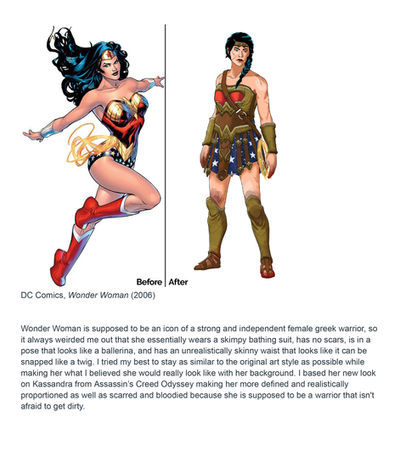Art History Remix
Contributor:
Denver University, Utah Tech University
PROJECT INFORMATION FOR EDUCATORS
Where?
Course Level
Open for a variety Foundations & Studio classes
Why?
Conversation points for instructors
This assignment addresses the way that images from the art historical canon have contributed
to negative forms of conditioning surrounding a variety of identities.
Many students immediately know what image they would like to change when I bring this assignment up, and that the chance to alter an image gives them a sense of power, authority, and autonomy.
PROJECT INFORMATION FOR STUDENTS
What?
Project Prompt / Challenge
Choose a painting from art history or an image from pop culture that entails exclusion, bias, or any other discomfort based on race, class, sexual orientation, or gender. Use Photoshop to alter the image so it is no longer contributing to that same exclusion, bias, or discomfort.
How?
Strategy
The first step is to identify what specific mechanisms of the image are contributing to the exclusion at hand. Consider:
What specifically might you change?
What could you leave the same?
Second, brainstorm a list of ways you might change those elements in order to come up with creative solutions. Come up with at least ten different possibilities, sketch out three of them, and choose one to bring to completion.
Your final image must look professional and complete, and the image, though changed, must be resolved with your changes.
Please submit one PDF file that includes:
-
the original image
-
your altered image
-
a short description of what you saw that was problematic and how you altered it (at least three or four sentences)
Materials:
Found original digital file, Adobe Photoshop
Timeline:
Students should spend about two to four hours on this assignment.
FURTHER SUPPORT INFORMATION
Student Examples:

Additional Tips:
I use this an extra credit assignment in various courses.
After they complete the assignment, a supportive secondary discussion I have with students asks them to consider the way their visual messages impact us as viewers. I've found that seeing students' altered images changes how I think/feel, especially seeing them side by side with the original image.



